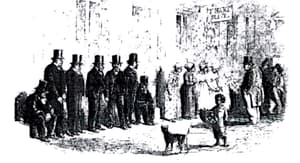In the th century, which were the two richest countries in the world?
Important Questions on The Making of a Global World
Which of the following statements about opium cultivation in India during the British period are correct?
I. The peasants could sell off the produce freely.
II. Local traders offered higher prices for opium.
III. Opium production was increasing in territories that were not under the British.
IV. Peasants were getting money advances from the village headman to produce opium.
Read the statements and select the correct answer from the options given below:
Statement – I: After the corn laws were scrapped the condition of peasants deteriorated as they were unable to compete with imports.
Statement – II: Around the world in Eastern Europe, Russia, America, and Australia lands were cleared, and food production expanded to meet the British demand.
Read the statements and select the correct answer from the options given below:
Statement I : Potatoes had been discovered by the European in the Americas.
Statement II: Poor people in Ireland were dependent on potatoes to escape starvation in the 19th century.
Observe the given picture taken from New Orleans, Illustrated London News :
What does the picture represent?

Read the statement carefully and choose the correct options.
Statement Silk Road routes existed only over land, connecting together vast region of Asia, and linking Asia with Europe and northern Africa.
Statement America's original inhabitants were the American Indians.
Statement Food like potatoes, soya, groundnuts, maizes, tomatoes, chillies, sweet potatoes were brought to the American from Europe.
Which of the following statement(s) is/are correct regarding the countries between the silk route?
A. It stretched from Asia to the Mediterranean.
B. The countries lie in between are China, India, Persia, Arabia, Greece, and Italy.
The name ‘silk routes’ points to the importance of West-bound _____ silk cargoes. (Chinese / British)
Which of the following were transported along the silk route
Chines silk and pottery.
Textiles and spices from India and Southeast Asia.
Precious metal likes gold and silver from Europe.
Match the items of column A with the corresponding items of column B and select the correct choice:
Column A Column B
Armenian and Persian merchants Trade links with Southeast Asian ports.
Surat on Gujarat coast Took goods from Punjab to Afghanistan, eastern Persia and Central Asia.
Hooghly in Bengal Connected India to the Gulf and Red Sea Ports.

